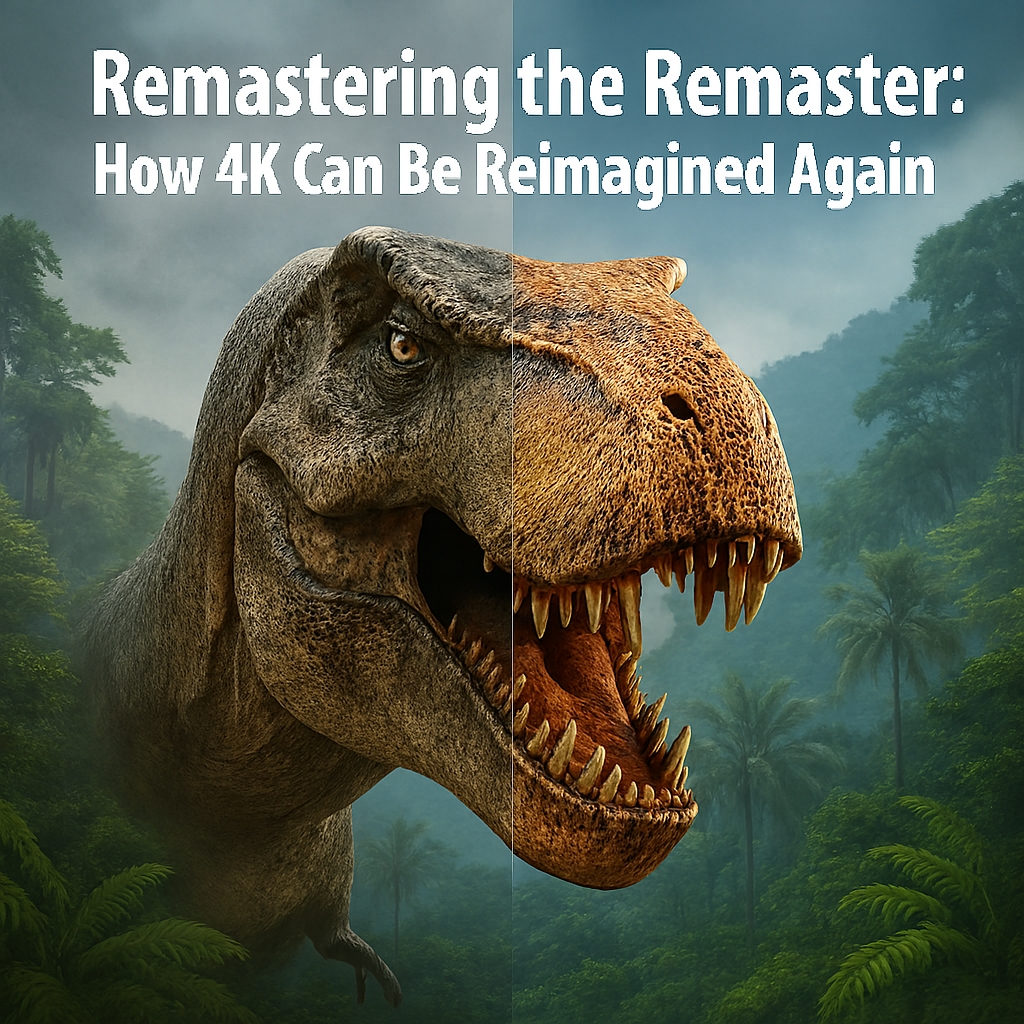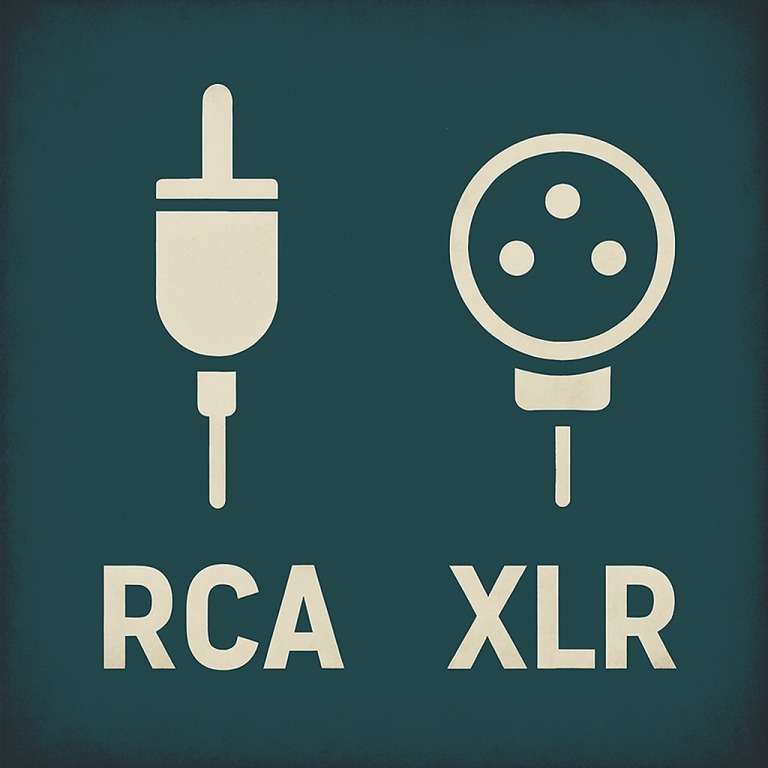Remastered in 4K Film restoration the Remaster – How 4K Can Be Reimagined Again
The Evolution of Ultra High Definition 4k Film Restoration — Why Remastered In 4K Isn’t the Final Frontier Jurassic
Park and the Future of Cinematic Restoration — What Happens After the First 4K Pass?
When a film is remastered in 4K film restoration, many assume it has reached its final form. But as technology evolves, even previously remastered titles like the Jurassic Park series are being revisited for deeper restoration. This isn’t redundancy—it’s refinement. A second 4K remaster can correct legacy errors, apply newer scanning techniques, and introduce advanced color grading tools that weren’t available during the first pass.
Studios now have access to higher bit-rate encoding, improved HDR standards, and more accurate film grain preservation. These upgrades aren’t cosmetic—they’re structural. They affect how light, texture, and motion are perceived across modern displays. For collectors and cinephiles, the question isn’t “why again?” but “how far can we go?” Using Jurassic Park as a case study, we’ll break down what happens when a classic gets a second ultra-high-definition rebirth.

Understanding the First 4K Remaster
The initial 4K remaster of a film typically involves scanning the original camera negative at 4K resolution. This process captures the full detail of the film stock—including grain, contrast, and color depth. For Jurassic Park, the first 4K release was based on a scan that prioritized clarity but lacked full HDR color grading optimization.
The encoding was limited to BD-66 disc capacity—which constrained bitrate and dynamic range. Color grading was done using tools available at the time—often SDR-based with limited Dolby Vision support. Audio mixes were upgraded to DTS:X or Dolby Atmos—but not always from original stems. Some visual effects were left untouched—preserving legacy compositing flaws. The remaster was a leap forward—but not definitive. It served as a foundation—not a final form. As technology improved—so did the possibility of doing it better. That’s where the second remaster begins.
Why Re-Remastering Is Technically Justified
Film negatives contain more detail than most digital formats can initially extract. A 4K scan from 2015 may miss nuances that a 2025 scanner can detect. Advances in sensor technology—color science—and grain mapping allow for more accurate digital representations. HDR standards have evolved—with Dolby Vision and HDR10+ offering deeper contrast and color precision.
Encoding tools now support BD-100 discs—allowing higher bitrates and fewer compression artifacts. AI-assisted restoration can remove dirt and scratches without harming texture. Audio remastering can now isolate dialogue—effects—and music more cleanly. Color grading software has become more precise—enabling scene-by-scene tone mapping. These improvements aren’t hypothetical—they’re measurable. Re-remastering isn’t about chasing perfection—it’s about honoring the source. When done right—it’s a restoration of intent.
Scanning the Original Negative Again
The first step in a second 4K remaster is rescanning the original camera negative. This isn’t duplication—it’s refinement. New scanners use higher dynamic range sensors—capturing more shadow and highlight detail. They also offer better stability—reducing jitter and flicker. The film is cleaned physically before scanning—removing dust and debris. Each frame is digitized with greater bit depth—often 16-bit per channel. This allows for smoother gradients and more accurate color reproduction. The scan is done at native 4K or higher—sometimes 6K or 8K for downsampling. Downsampling improves sharpness and reduces aliasing. The result is a cleaner—more faithful digital master. This becomes the foundation for all further restoration.
Color Grading with Modern Tools
Color grading is where the film’s emotional tone is shaped. In a second remaster—this process is revisited with newer software and standards. Tools like DaVinci Resolve and Baselight offer scene-referenced grading—allowing precise control over contrast and saturation. Dolby Vision metadata can be embedded—enabling dynamic HDR on compatible displays. Graders can now isolate skin tones—skies—and shadows with surgical precision.
LUTs (Look-Up Tables) are used to match the original theatrical look. Grain structure is preserved—not flattened. Highlights are recovered from the scan—not artificially boosted. The goal is to honor the director’s intent—while enhancing the viewing experience. This process takes weeks—sometimes months. Every shot is evaluated—adjusted—and approved. The result is a richer—more immersive color palette.

Audio Restoration and Remixing
Audio is often overlooked in remastering—but it’s just as critical. A second remaster revisits the original audio stems—separating dialogue—effects—and score. These elements are cleaned using spectral editing tools—removing hiss—pops—and distortion. Dialogue can be enhanced for clarity—especially in older mixes. Effects are rebalanced to match modern surround standards.
Music is remixed to preserve dynamics and spatial placement. Dolby Atmos or DTS:X mixes are created from scratch—not upmixed. This allows for true object-based audio—with sounds placed in 3D space. The result is a more immersive soundstage—matching the visual upgrade. Audio mastering ensures consistent loudness and tonal balance. It’s not just louder—it’s clearer. The film sounds as fresh as it looks.
Visual Effects and Compositing Revisited
Jurassic Park’s original effects were groundbreaking—but some compositing artifacts remain. In a second remaster—these can be addressed without altering the film’s legacy. Matte lines—color mismatches—and grain inconsistencies are corrected. CGI elements are rebalanced to match the new color grade. Some scenes may be re-rendered using original assets—if available. This isn’t revisionism—it’s restoration. The goal is to make the effects seamless—not modernized. Film grain is matched across layers—preserving texture. Motion blur and lighting are adjusted to reduce artificiality. The dinosaurs don’t change—but they integrate better. It’s subtle—but powerful.
Encoding for Modern Disc Formats
Encoding is the final step before distribution. The second remaster uses BD-100 discs—allowing higher bitrates and fewer compression artifacts. HEVC (H.265) encoding is optimized for HDR and wide color gamut. Bitrate allocation is done scene-by-scene—preserving detail where it matters most. Grain is encoded with minimal smoothing—maintaining filmic texture. Color subsampling is kept at 4:2:2 or better—reducing banding. Audio is encoded in lossless formats—like Dolby TrueHD or DTS-HD MA. Metadata for HDR is embedded—ensuring consistent playback. The result is a disc that pushes the format’s limits. It’s not just a re-release—it’s a redefinition. Collectors notice the difference. So do casual viewers.
Streaming and Digital Mastering
Beyond physical media—the remaster is prepared for streaming platforms. This involves creating multiple versions—optimized for bandwidth and device capabilities. HDR10 and Dolby Vision streams are encoded separately. Bitrate is adjusted for 4K TVs—tablets—and phones. Audio is mixed for stereo—surround—and object-based playback. Compression is minimized using adaptive algorithms. The master file is archived in ProRes or JPEG2000—preserving full quality. Streaming versions are derived from this master—not re-encoded from discs. This ensures consistency across platforms. The film looks great on Netflix—Apple TV—or YouTube. It’s not just accessible—it’s optimized.
Archival and Preservation Standards
A second remaster isn’t just for today—it’s for the future. The final master is archived using industry standards for long-term preservation. This includes storing uncompressed files on LTO tapes or cloud systems. Metadata is embedded for cataloging and retrieval. Color profiles and grading decisions are documented. Audio stems are stored separately—allowing future remixing. Restoration notes are included—detailing every change. This ensures transparency and reproducibility. The archive becomes a reference for future remasters—or academic study. It’s not just a product—it’s a legacy. Jurassic Park becomes part of cinematic remastering history—preserved in its best form.
Quality Control and Review
Before release—the remaster undergoes rigorous quality control. This includes frame-by-frame review for artifacts—errors—and inconsistencies. Color grading is checked on multiple displays—including OLED—LCD—and projection. Audio is tested in stereo—surround—and Atmos setups. Subtitles and captions are verified for accuracy. Disc authoring is tested for navigation and playback. Streaming versions are reviewed for buffering and compression. Any issues are corrected before final encoding. This process ensures a flawless experience. It’s meticulous—but necessary. The film deserves it. So does the audience.
Marketing Without Overstatement
Marketing a second remaster requires nuance. Studios avoid phrases like “ultimate” or “final”—focusing instead on technical improvements. The messaging highlights new scans—better color—and immersive audio. Collectors are shown comparisons—not hype. The campaign respects the film’s legacy—while celebrating its renewal. Packaging is designed to reflect quality—not gimmicks. Trailers showcase visual depth and sound clarity. Interviews with restoration teams add credibility. The goal is trust—not trend. Jurassic Park isn’t just re-released—it’s re-respected.

Collector and Fan Reception
Fans notice the difference. Online forums compare screenshots—audio mixes—and restoration notes. Collectors appreciate transparency—especially when changes are documented. The second remaster often sparks renewed interest in the film’s legacy—prompting discussions about fidelity and intent. Some viewers prefer the original remaster’s tone—while others embrace the new version’s clarity and depth. The conversation isn’t about nostalgia versus progress—it’s about nuance. Restoration teams often engage with fan communities—sharing insights and responding to feedback. This dialogue builds trust—and reinforces the value of iterative restoration. Jurassic Park’s re-remaster becomes more than a technical upgrade—it becomes a cultural event. The audience isn’t passive—they’re part of the process. Their reactions shape future remastering standards.
Restoration Ethics and Artistic Integrity
Re-remastering a film raises ethical questions about artistic intent. Should restorers correct visual flaws—or preserve them as part of history? The answer depends on context. For Jurassic Park—Steven Spielberg’s original vision guides every decision. Restoration teams consult production notes—storyboards—and theatrical prints. The goal is fidelity—not revisionism. Grain is preserved—not scrubbed. Color grading respects the film’s mood—not trends. Audio mixes retain original dynamics—while enhancing clarity. Ethical restoration means transparency—documenting every change. It also means restraint—knowing when to leave something untouched. The second remaster isn’t a reinterpretation—it’s a refinement. It honors the film’s legacy—while embracing modern tools. Artistic integrity is the compass—technology is the vessel.
The Role of AI in Modern Restoration
Artificial intelligence now plays a key role in film restoration. Machine learning models can detect and remove dust—scratches—and flicker without harming detail. AI can also enhance resolution—reconstruct missing frames—and stabilize jitter. These tools are trained on thousands of film samples—learning how to preserve texture and tone.
In a second 4K remaster—AI assists—not replaces—human judgment. Restoration artists guide the process—reviewing every frame. AI speeds up labor-intensive tasks—freeing time for creative decisions. It also enables restoration at scale—making rare titles more accessible. For Jurassic Park—AI helps refine effects—balance grain—and clean audio. The result is a more efficient—more precise workflow. But the artistry remains human. AI is a tool—not a voice.
Display Technology and Viewer Experience
Modern displays reveal flaws that older TVs masked. OLED panels show deeper blacks—brighter highlights—and more accurate colors. This means that even a well-done 4K remaster from 2015 may look dated on a 2025 screen. A second remaster addresses these shifts—optimizing tone mapping and color grading for current standards. Dolby Vision and HDR10+ ensure consistent playback across devices. Frame interpolation and motion handling are considered—especially for action scenes. Audio mixes are tuned for soundbars—headphones—and home theaters. The viewer experience becomes more immersive—more cinematic. Jurassic Park feels alive again—not just restored. The remaster adapts to the display—not the other way around. It’s a tailored experience—designed for today’s audience.
Cultural Significance of Re-Remastering
Re-remastering isn’t just technical—it’s cultural. It reflects how society values preservation—storytelling—and shared memory. Jurassic Park isn’t just a blockbuster—it’s a generational touchstone. Revisiting it in higher fidelity allows new audiences to connect—and older ones to rediscover. The process becomes a form of cultural stewardship—curating the past for the future. It also sparks dialogue about media ownership—access—and authenticity. Who decides what version is definitive? How do we balance nostalgia with innovation? These questions matter—especially as more films undergo iterative restoration. The second remaster becomes a mirror—reflecting our evolving relationship with cinema. It’s not just about pixels—it’s about meaning.
Conclusion
Remastering a film in 4K is no longer a one-time event—it’s an ongoing dialogue between technology—artistry—and audience. As tools improve and standards evolve—so does the potential for deeper restoration. Jurassic Park’s second 4K remaster exemplifies this shift—showing how even iconic titles can benefit from renewed attention. The process involves rescanning—regrading—remixing—and reencoding—all with a commitment to fidelity and integrity. It’s not about chasing perfection—it’s about honoring the source. For creators—collectors—and fans—this evolution is both exciting and necessary. It ensures that cinema remains vibrant—accessible—and emotionally resonant. The remaster isn’t just a product—it’s a promise—to preserve and elevate the stories that shape us.
Join the Discussion
Have you noticed the difference between first and second 4K remasters? What details stand out most to you—color—sound—or texture?
#FilmRestoration #4KRemaster #JurassicPark #CinematicPreservation #HDRCinema #DolbyVision #RemasterEthics #AIinFilm #VisualStorytelling #CollectorCulture #DigitalArchiving #CinemaLegacy #UltraHD #ColorGrading #SoundDesign







